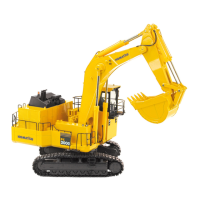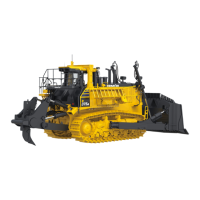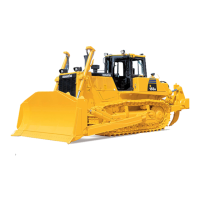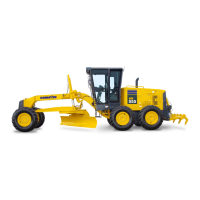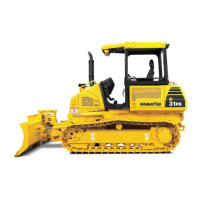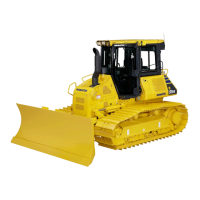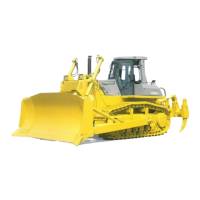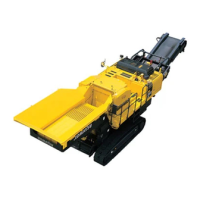2-90
16. TROUBLESHOOTING
This machine must not be towed except in emergencies. When towing the machine, take the
following precautions.
‡ Before releasing the brakes, put blocks under the wheels to prevent the machine from moving. If
the wheels are not blocked, the machine may suddenly move.
‡ When towing a machine, tow it at a low speed of less than 2 km/h (1.2 MPH), and for a distance of
a few meters to a place where repairs can be carried out. The machine should be towed only in
emergencies. If the machine must be moved long distances, use a transporter.
‡ Use a towing machine of the same class as the machine being towed.
Check that the towing machine has ample braking power, weight, and rimpull to allow it to control
both machines on slopes or on the tow road.
‡ Use the specified towing pin for both the towing machine and the machine being towed.
‡ To protect the operator if the towing wire or towing bar breaks, install protective plates on both the
towing machine and the machine being towed.
‡ Keep the angle of the towing wire as small as possible.
Keep the angle between the center lines of the two machines to within 30 degrees.
‡ When towing down a slope, use two towing machines. One machine should be uphill from the
disabled machine and should be connected with towing wire or a drawbar to pull the disabled
machine back and keep it stable. The other machine should tow the disabled machine downhill.
‡ Towing may be carried out under various differing conditions, so it is impossible to determine
beforehand the requirements for towing.
Towing on flat horizontal roads will require the minimum rimpull, while towing on slopes or on
uneven road surfaces will require the maximum rimpull.
16.2.1 WHEN ENGINE RUNS
‡ If the transmission and steering wheel can be operated, and the engine is running, it is possible to
tow the machine out of mud or to move it for a short distance to the edge of the road.
‡ The operator should sit on the machine being towed and operate the steering in the direction that
the machine is towed.
16.2.2 WHEN ENGINE DOES NOT RUN
When towing a machine with the engine stopped, use the following procedure.
1. The transmission oil does not lubricate the system, so remove the front and rear drive shafts. If
necessary, block the tires to prevent the machine from moving.
2. The steering cannot be operated, so remove the steering cylinder and steering linkage.
Even if the brakes are in good condition, the brakes can only be used a limited number of times. There
is no change in the operating force for the brake pedal, but the braking force is reduced each time
the pedal is depressed.
3. Connect the towing equipment securely. When carrying out towing operations, use two machines
of at least the same class as the machine being towed. Connect one machine each to the front and
rear of the machine being towed, then remove the blocks from the tires and tow the machine.
4. Parking brake
The parking brake cannont be turned OFF. To release the parking brake, do as follows.
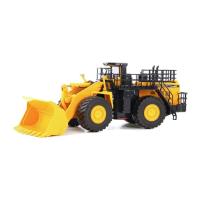
